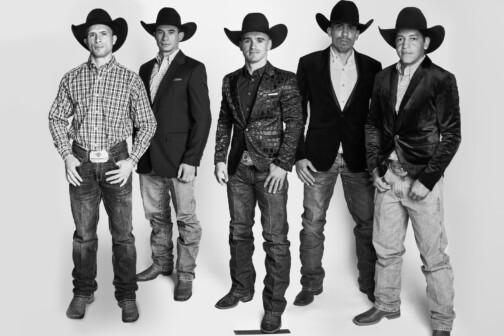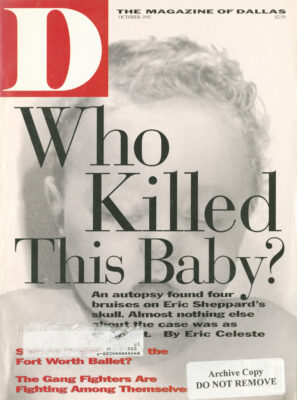The August 8 defeat of a half-penny sales tax to help lengthen Fair Park’s life was a sad example of how knee-jerk tax-shy we’ve become. And while tax-timidity seems to be all the rage these days, the fact is that August 8 was not one of Dallas’ better days.
Craig Holcomb, who leads the Friends of Fair Park, is right in saying that the halfpenny tax rejection seems to have been a reaction only to taxes in general-it wasn’t as if folks were suggesting that Fair Park isn’t important. But hard times may have made us forget just how important something as unique as Fair Park really is. Economic showdowns will pass. If Fair Park crumbles, it’s gone for good.
The Rollerbladers who streak along the Park’s grand promenades at sunset can tell you that the admission fee is reasonable-it’s free. And 6 million people take advantage of that fact each year, thanks to the city’s S3.4 million in annual operating money. But, the infrastructure that holds it all together needs shoring up. The half-penny sales tax would have supported a plan for more than $60 million worth of improvements throughout the park. A big $23.1 million was earmarked for modernizing the Cotton Bowl. Some S9.9 million would have been used to buy land and create more parking areas. As much as $22.3 million was to go to the physical renovations needed by up to a dozen buildings. As news of the referendum’s defeat was published, it was hard to know why the sales-tax opponents pictured in The Dallas Morning News-one wearing a really charming “Save Water, Drink Beer” T-shirt-were grinning.
In the immortal style of Johnny Carson, how fair is it?
It isn’t fair if you watch the soaring eagles in the “Kings of the Wind” show at the State Fair this month and don’t pay special attention to the Fair Park those birds are soaring over.
It isn’t fair if you get giddy with the cattle shows, the herds of swine, the runs of rabbits and the heady smell of donkeys and mules, and let your attention stay so completely down on the farm that you don’t notice the Paris around you.
It isn’t fair, in fact, if you enjoy any of the 1992 State Fair of Texas with-out looking past your cotton candy to see Fair Park itself. We don’t have that luxury anymore.
Fair Park is lo Dallas what the beautiful multipurpose cultural garden called Balboa Park is to San Diego. Even better than the heroic festival architecture that gives Fair Park its art-deco processional vistas is the fact that it’s a monument to Dallasites’ curiosity.
Nip out of work on a schoolday and drop in The Science Place or its planetarium building. Or drop in the Dallas Museum of Natural History. The last time I was there earthworms were making dirt in the lobby and the “Sharks! Fact and Fantasy” exhibit that opens this month was going in upstairs. Outside work was under way on a renovation that will open more exhibition space upstairs and put offices and labs in the basement.
Right by the Magnolia Lounge-which once housed Margo Jones’ seminal theater and now is the office for the Friends of Fair Park-the Museum of African-American Life and Culture steadily is rising toward its domed completion.
Check out the northern perimeter of Fair Park and you’ll find one of my favorite spots, the Age of Steam Railroad Museum. The world’s largest steam locomotive is there. You can also see Pullman cars outfitted with original accessories that will jolt you back into an era of rolling transport.
The Dallas Aquarium’s got an alligator snapping turtle who weighs 125 pounds. There’s also a 5-foot electric eel, live sea horses and some bizarre oddities of seagoing nature.
The 3.420-seat Music Hall this month is the performing home to stage and film star Keith Carradine and his leggy chorines in The Will Rogers Follies, the national touring edition of the Tony-winning Broadway musical.
And, of course, we’ll all be there this month for the more than 60 rides at the State Fair. We’re there for the Hot Wheelz Bike Show, the Olympic high-diving, the Cotton Bowl laser show and maybe even the bass fishing show.
But don’t forget there’s an escape from the noise in the controlled environment of the Dallas Civic Garden Center’s walkthrough plant conservatory. And the major crowds will thin out some later, so you can return and focus on various parts of the park that interest you after October-none of this will disappear when the fair leaves town. Unless we let it.
“There’s no doubt that most of it was meant to stand for only about five years.” says Holcomb about the many buildings that now have sagging foundations and serious roofing problems.
The 1930 Cotton Bowl, first named Fair Park Stadium, was designed for a long life, as were the regal Hall of State and the Music Hall. But other facilities were part of the 1936 Texas Centennial Exposition that turned the place into what is said to be the largest collection of 1930s art-deco architecture in existence. Opera Under the Stars began in 1941. Ten years later, it would move indoors and evolve into the Dallas Summer Musicals, the presenter of this month’s Follies.
A love for Fair Park means no disrespect to the State Fair, Far from it
In fact, the chicken came before the egg. Eighty acres of what is now the 277-acre Fair Park grounds formed the site of the first State Fair of Texas in 1886. Not until 1904 did the city of Dallas own the property. And immediately a wonderful business relationship was started: When Dallas bought the land from the State Fair for $125,000. the fair donated $45,000 of the sale plus an extra $30,000 back to the city in order to build a 75,000-square-foot exhibition hall.
Today, the much-renovated descendant of that building is what we know as the Centennial Building, where the Catherine the Great exhibition of Russian art is currently housed. And, if the State Fair hadn’t poured $2.5 million of last year’s profits into the city’s Fair Park coffers, the Centennial Building wouldn’t have the air conditioning that not only makes it bearable to visit but also safe for an exhibition of delicate art.
The State Fair, an entirely self-supporting non-profit venture, not only pays the city $700,000 for the use of Fair Park, plus $750,000 toward the park’s maintenance, but also reinvests all income above its expenses each year into repairs, renovations and improvements. Considering the resounding defeat of that half-cent, one-year sales-tax referendum, it’s good to know that your $8 adult admission to the fair might help give the Pan American Building’s roof the attention it needs.
The State Fair has an annual operating budget of around $12 million. Spokesperson Nancy Wiley says the income from admissions, parking fees and exhibition-space leases may come to $13 million-$14 million. The fair helps the park all year long, though it lives, itself, for only 24 days annually. What a deal.
So congratulations, fair-goer. You may think you’re just at the fair to enjoy Tanya Tucker or Charlie Daniels or Los Lobos in a Miller Lite Live Stage show-but you’re really doing the work of that sales tax you defeated. I hope you’ll go to the fair a lot. Spend a lot of money there. Knock yourself out.
It’s only fair.
Get our weekly recap
Brings new meaning to the phrase Sunday Funday. No spam, ever.
Related Articles

Baseball
How Clayton Kershaw Made the Senior Year Leap
An excerpt from the new book The Last of His Kind: Clayton Kershaw and the Burden of Greatness.
By Andy McCullough

Publications
How Nearly 50 Brazilian Bull Riders Landed in Decatur
Decatur’s rodeo heritage spans the Western Hemisphere.
By Kathy Wise

Local News
Less Than a Week In, Dallas’ Interim City Manager Makes Changes at City Hall
Kimberly Bizor Tolbert started her job as interim city manager on May 2. She kicked off her first week by shaking up the city's organizational chart.


